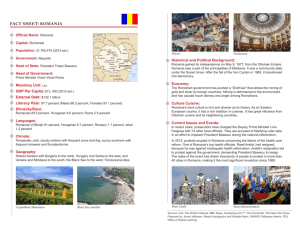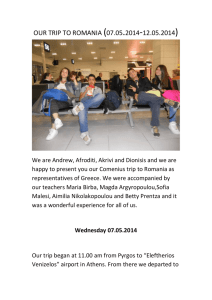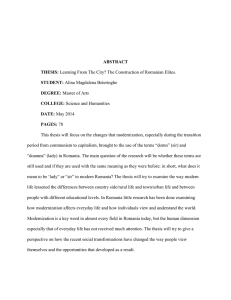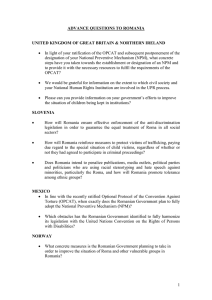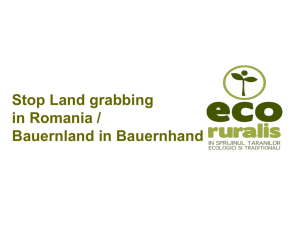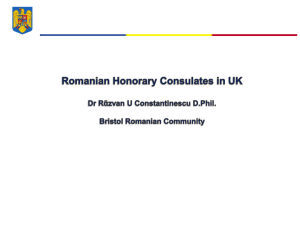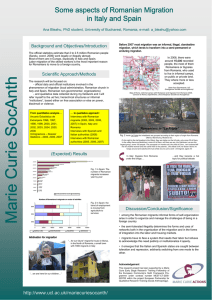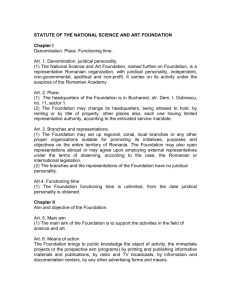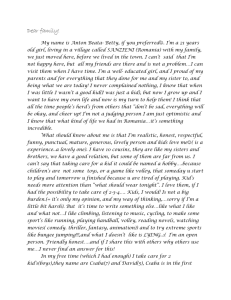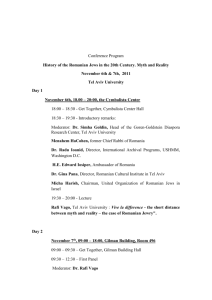Our beautiful country
advertisement
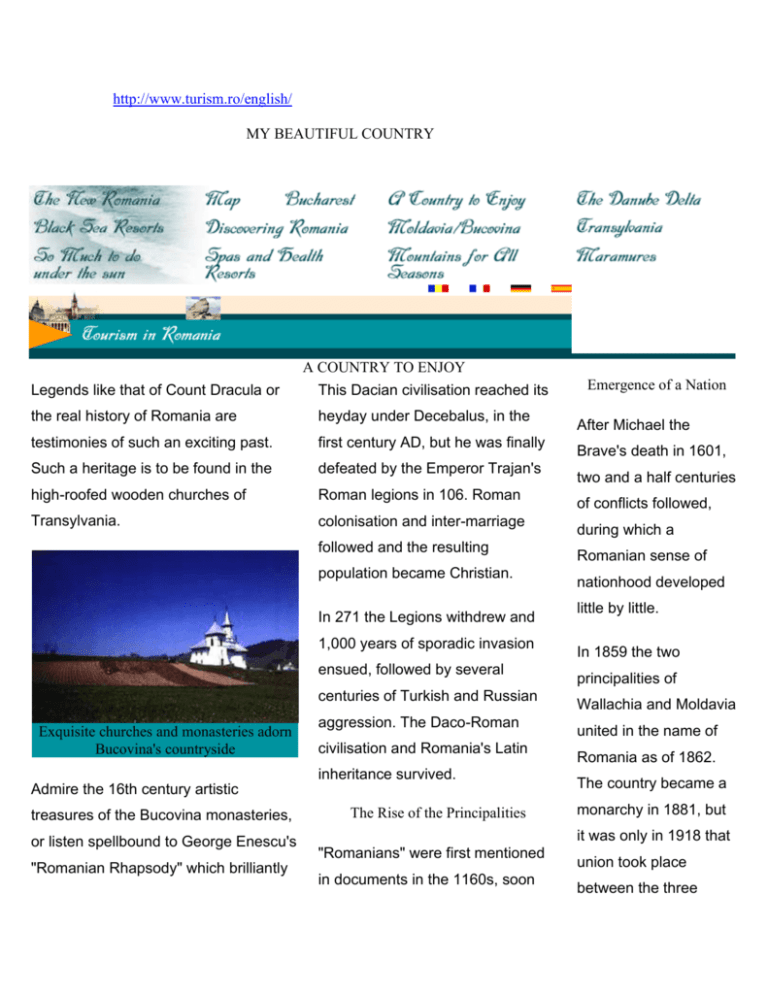
http://www.turism.ro/english/ MY BEAUTIFUL COUNTRY A COUNTRY TO ENJOY Legends like that of Count Dracula or This Dacian civilisation reached its the real history of Romania are heyday under Decebalus, in the testimonies of such an exciting past. first century AD, but he was finally Such a heritage is to be found in the defeated by the Emperor Trajan's high-roofed wooden churches of Roman legions in 106. Roman Transylvania. colonisation and inter-marriage followed and the resulting population became Christian. In 271 the Legions withdrew and 1,000 years of sporadic invasion ensued, followed by several centuries of Turkish and Russian Exquisite churches and monasteries adorn Bucovina's countryside Admire the 16th century artistic treasures of the Bucovina monasteries, or listen spellbound to George Enescu's "Romanian Rhapsody" which brilliantly aggression. The Daco-Roman civilisation and Romania's Latin inheritance survived. The Rise of the Principalities "Romanians" were first mentioned in documents in the 1160s, soon Emergence of a Nation After Michael the Brave's death in 1601, two and a half centuries of conflicts followed, during which a Romanian sense of nationhood developed little by little. In 1859 the two principalities of Wallachia and Moldavia united in the name of Romania as of 1862. The country became a monarchy in 1881, but it was only in 1918 that union took place between the three inspired from folklore themes. after which Wallachia and Moldavia The most decisive influence on this emerged as principalities. Romanian provinces. After 1945 the country's development was that of A succession of noble leaders held Russians deposed the ancient Rome. of the Turks, namely Prince Mircea king and imposed the Old, Prince Vlad Tepes (the communism. The Impaler) and Stephen the Great of revolution of December Signs of human life are to be found in Moldavia, who built close to 50 1989 brought Romania the Carpathian mountains since around monasteries and churches and firmly back into 600.000 BC. moulded Moldavian culture. democratic Europe. Although there had been Greek In the 16th century Michael the The most obvios result colonies on the Black Sea coast since Brave united all these three is that the age-old the 6th century BC, the first centralised provinces and chased away the friendliness and kingdom was of a Thracian people Turks. In many respects the 15th generosity of called the Dacians. and 16th centuries were a golden Romanians have been age of architecture and art. asserted again, as Six Hundred Thousand Years of History visitors will soon appreciate. Inspiring Cultural Diversity Such a past was bound to create a great range of artistic and cultural achievements. Ceramics and pottery, woven rugs, Constantin Brancusi, icons, and woodcarvings are celebrated sculpturer accompanied by local cuisine and wines. The monumental works of Brancusi (1876-1957) are famous and well represented in international collections, namely in the Museum of Modern Art in New-York. Visiting Romania gives you the chance to see his work Colourful local festivals take place every year Romanian village architecture is imaginative and colourful. Broadly, three main strands are discernible and anyone travelling across Romania can see splendid examples of them all. Country-style Crafts and Cuisine Romania's traditional village architecture, crafts and cuisine represent a living culture of unique value. Cooking is an art, too, and Romanians make good use of their mushrooms and vegetables, their pork, chicken and beef, sometimes in spicy dishes with an oriental flavour. Princely Patronage The noble families of Romania were great builders and patrons. There are numerous medieval castles, some of Here, among trees and lawns, there are works such as "The Gate of the Kiss", "The Endless Column", "The Alley of Chairs", and "The Table of Silence" displayed as Brancusi wanted them to be. spectacular county, too. If Baroque styles were adapted to a specifically Romanian pattern the late 17th century ruler of Wallachia, doorways of Transylvanian Constantin Brancoveanu. regional costumes and the the north of Oltenia. Bran castle. Look for the finely carved churches, the variety of Hobita, his home village, in Targu Jiu is in a Corvin, while Renaissance and houses, the beautiful wooden a park in Targu Jiu, near which are like taken from fairytales, like Others are fancifully French such as Music and traditional dress are part of the Romanian life in the marvellous setting of the town is not on your itinerary - then put it on! simplicity of country artefacts. Modern Art and Music In the 19th and 20th centuries nationhood was matched by an outpouring of artistic talent. The playwright Eugen Ionesco, the sculpturer Constantin Brancusi, and the composer George Enescu, are just three outstanding examples. Their talent and that of their successors is appreciated throughout the country in concerts, operas, galleries and exibitions. Romania's cultural heritage is a living one both in fine art and folk art.

